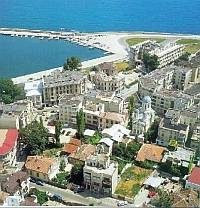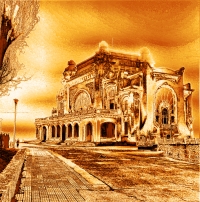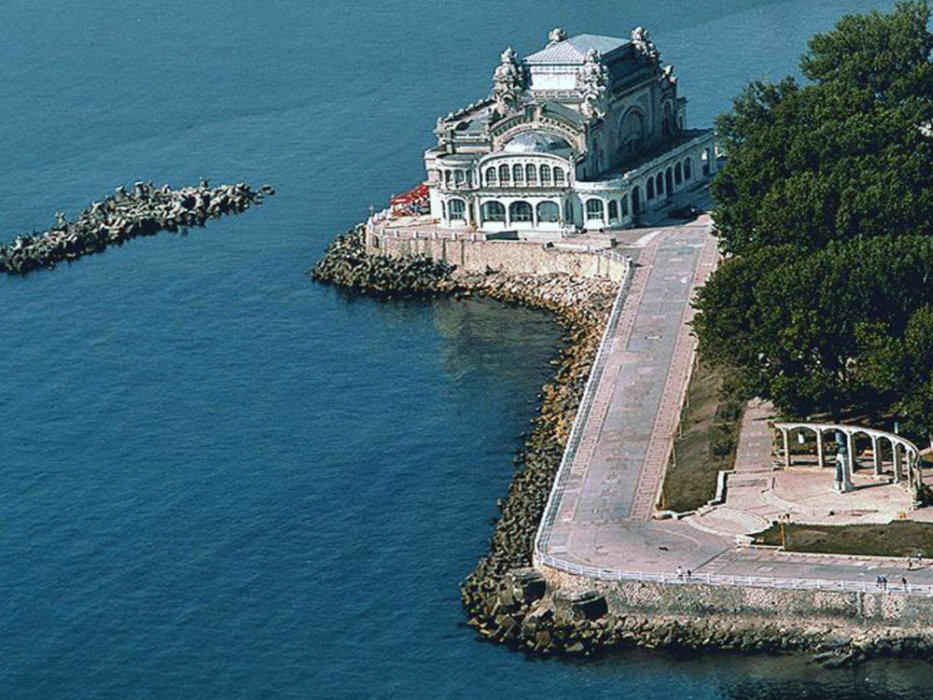Beyond the city limits of Constanta, the resort area of Mamaia (Romania's most popular seaside holiday destination) stretches out along a sandbar for a length of about 6 kms (4 mi).
These tours are intended especially for the tourists on the cruise ships visiting Constanta for one day. Please contact us for any other Constanta shore tour arrangement.
Constanta facts
The most flourishing period of this city fortress, named Tomis, is the middle of the 1st century A.C. Roman domination on the territories between Istros (Danube) and the Black Sea, which became Roman province, raised the city at the rank of capital. In this time many temples were built, big buildings, public squares and baths, marble shops, streets and new districts.
Tomis was later renamed to Constantiana in honor of Constantia, the half-sister of Constantine the Great (274-337 AD).
The town is also found on medieval nautical maps as well as on the Genoa's sailors ones. The economical and cultural role during the Mircea cel Batran's reign is not perceptible, but during the Ottoman domination, when called Kostendje, the significance of the town was minor.
Town's lethargy continues until the 19th century, when some harbor arrangements were started and the railway Constanta-Cernavoda was laid out, crucial moment for further development of the town.
After the Independence War (1877-1878) the town merges out of the Ottoman domination, regains its name of Constanta and becomes residence of Constanta region, part of Romania. Harbor arrangements are made as well as constructions of roads, bridges, railways, town planning modernization.
Constanta was seriously affected by the two World Wars, the town being reconstructed each time; after 1945 the rising advance continues and Constanta becomes one of the most developed towns in Romania.
Nowadays Constanta is the biggest port in Romania, a powerful industrial commercial and tourist center, a wide gate towards the world.
Constanta tours highlights
The Archaeological Museum that has an important collection of ancient treasures discovered along the Black Sea coast, among which are the remains of a large Roman mosaic tile floor.
This museum is one of the richest in the country, with collections of pre-historical, Greek, Roman, Bizantine, Medieval archaeology. Among the statues exhibited here, the most famous are that of Fortuna Goddess and Pontos God (protectors of the town) and of the Glycon snake, the protector of the house and family.
The Roman Mosaic is one of the largest known mosaics in Europe. Nearly 2,000 years old, the mosaic was once an immense decorative pavement used by the Romans. Today, a substantial portion remains of the thousands of multi-hued tiles that comprise this beautiful and extraordinary piece of history.
Ovid Square, named so after the famous Roman poet, Ovid, exiled here by the Roman Emperor in 8 A.D. His statue, built 1888 by the famous sculptor, Ettore Ferrari, faces the Sea.
In 1925, an identical replica has been made in Sulmona, Italy (Ovid's birthplace).
The Genoese Lighthouse is located on the cliff of Constanta.
It was built around 1300 by the Genoese merchants who established a flourishing sea trade community here and restored between 1858-1860 by the Danubius and Black Sea Company.
Octagonal lighthouse has a height of 8 meters and the top has a metal dome.
It was operational until 1913 then in 1948 was restored once again, for tourist purposes this time.
The Great Mosque offers a magnificent view of the Constanta Port and city.
Designed in a Byzantine Egyptian architectural style with Romanian influences it was built between 1910 and 1912 by the Romanian engineer Gogu Constantinescu as a gift to the Muslim community of Dobrogea from Carol I, King of Romania.
It features a 50 meter high minaret, built in Moorish style and has 140 stairs.
The centerpiece of the interior is a large Persian carpet, over 200 years old, a gift from Sultan Abdul Hamid. Handmade woven at the Hereche Handicraft Center in Turkey, it is one of the largest carpets in Europe (9x16m), weighing 500 kg.
Useful info on Constanta and Romanian Black Sea Coast:

Our Constanta Shore Tours
- Constanta sights & Roman Ruins
- Constanta sights & Ancient Citadel of Histria
- Constanta sights & Tropaeum Traiani Adamclisi
- Constanta sights & Wine tasting at Murfatlar vineyards
- Constanta sights & Wine tasting at Clos des Colombes vineyards
- Danube Delta (with lunch)

